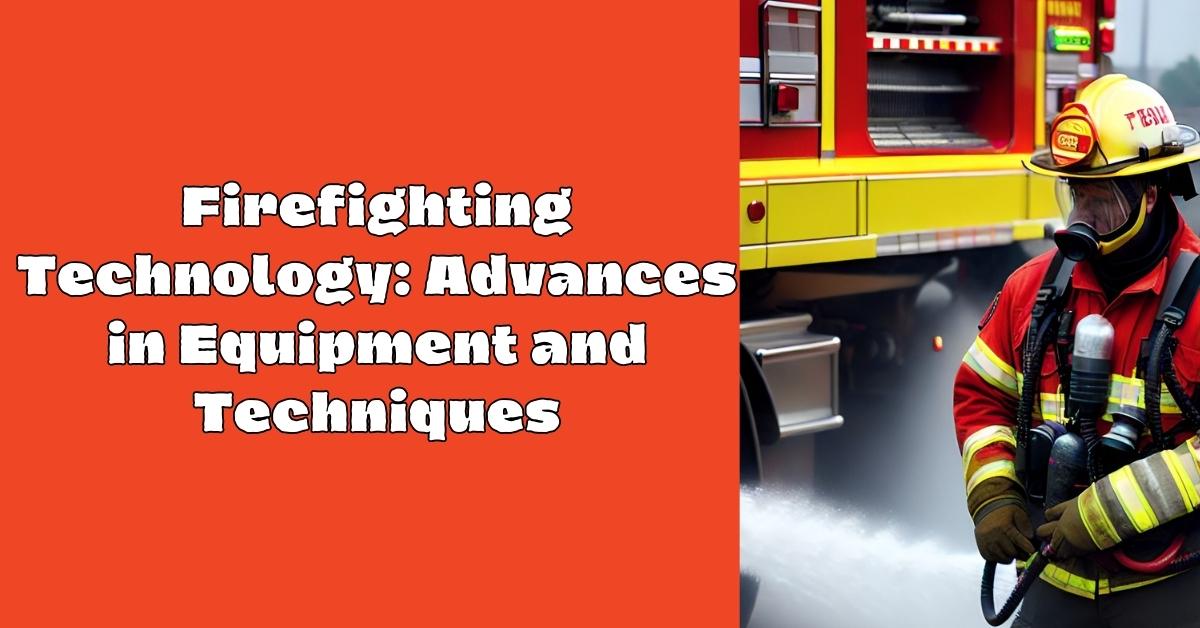Fires can be catastrophic and cause significant loss of life and property. As such, firefighting technology has evolved significantly to help firefighters better combat and control fires. This article will explore some of the latest advances in firefighting equipment and techniques.
Thermal Imaging Cameras
Thermal imaging cameras are specialized cameras that detect heat signatures using infrared radiation. They are an important tool for firefighters, helping them to identify hot spots in burning buildings that are not visible to the naked eye. This can help firefighters locate the source of a fire and determine the best course of action to control it.
In addition to detecting heat signatures, thermal imaging cameras can be used to locate people trapped in a burning building by detecting their body heat. They can also be used to monitor the effectiveness of firefighting efforts and adjust tactics accordingly.
Advancements in technology have made thermal imaging cameras more advanced and effective than ever before. Modern TICs are lightweight, easy to use, and can provide real-time feedback to firefighters. The latest advancements include multi-sensor cameras that combine infrared imaging with other sensors, such as gas detectors, to provide a more comprehensive picture of the situation.
Personal Protective Equipment
Personal Protective Equipment (PPE) is specialized equipment worn by individuals to protect against physical, chemical, biological, and other hazards that may be present in the workplace or other environments. PPE includes safety goggles, helmets, gloves, respirators, and full-body suits and is often required in industries such as construction, manufacturing, healthcare, and emergency services.
PPE is designed to provide a physical barrier between the individual and potential hazards, reducing the risk of injury or illness. It is important to note that PPE is not a substitute for other safety measures, such as engineering controls or safe work practices, but rather an additional layer of protection.
The selection of appropriate PPE depends on the specific hazards present in the environment and the individual’s job duties. It is important to properly train individuals on the proper use and care of PPE and to inspect and replace equipment as necessary regularly.
Effective use of PPE can help prevent workplace injuries and illnesses, protecting both workers and employers. In addition to being required by law in many industries, using PPE is often a best practice for promoting a safe and healthy work environment.
High-Pressure Water Systems
High-pressure water systems are another recent advancement in firefighting technology. These systems use high-pressure water to extinguish fires quickly and can effectively fight wildfires. The systems can be mounted on firefighting vehicles or carried by firefighters, and they are designed to be lightweight and easy to use.
Robotics
Robotic firefighting technology is still in its early stages, but it can potentially revolutionize the industry. Robots can be used to enter burning buildings and other hazardous areas where it may be too dangerous for human firefighters to go. Some robots are equipped with firefighting equipment and can spray water or foam on flames, while others are designed to locate and rescue people needing assistance.
Drone Technology
Drones have become increasingly popular in firefighting in recent years. Drones equipped with thermal imaging cameras can be used to identify hot spots in buildings and other structures, and they can also be used to assess the damage after a fire. In addition, drones can be used to survey wildfires, helping firefighters map out the fire’s extent and plan their strategy for controlling it.
In conclusion, firefighting technology has come a long way in recent years. These advancements, from thermal imaging cameras to high-pressure water systems and drones, are making it easier for firefighters to fight fires and keep people safe. As technology continues to evolve, we will likely see even more advances in firefighting equipment and techniques in the years to come.
